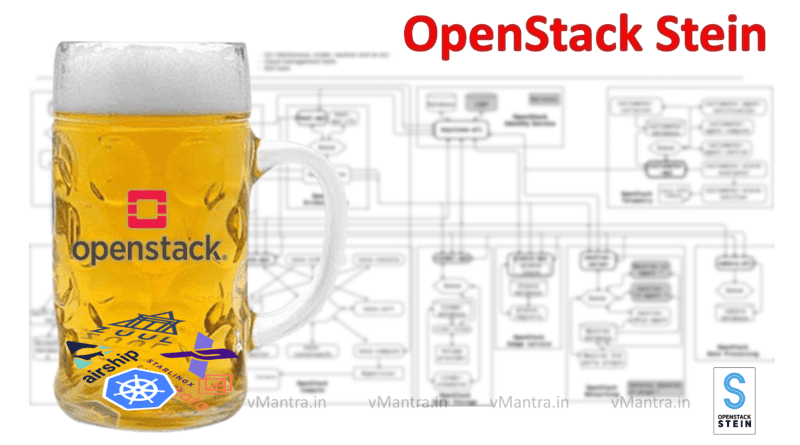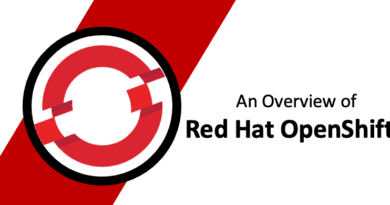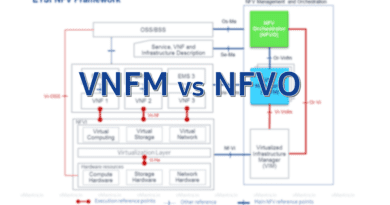OpenStack Stein ready for 5G, NFV and MEC
In This Article
OpenStack Stein
With the contribution of 150 organizations and more than 1400 contributors, the OpenStack Community releases the 19th version of its most widely deployed open-source cloud infrastructure software, OpenStack, Stein.
The OpenStack Stein release comes with a lot of improvements and fixes on its last version, “Rockey.” It seems the community has more focus on enhancing container support and adapting to the most advanced network technologies like 5G, Network Functions Virtualization (NFV), and Multi-access edge computing (MEC) along with bare metal provisioning and interoperability with other projects. These enhancements make this release of OpenStack more than just an Infrastructure-as-a-Service (IaaS) platform.
OpenStack Stein includes dozens of enhancements, few highlights are:
- Greatly improved Magnum and support for Kubernetes clusters and containers
- Enhanced networking for 5G, NFV and Multi-Access Edge Computing (MEC):
- Enhanced bare metal capabilities.
- Adopted new projects
Greatly improved Magnum and support for Kubernetes clusters and containers:
One of the major improvements with the OpenStack Stein release is towards container management. Magnum, the OpenStack’s Kubernetes installer, has improved in such a way that it can launch a Kubernetes cluster only in five minutes, irrespective of the number of nodes. whereas prior to this it was 10 to 12 minutes per node, it means, for example, if there are 20 nodes in a cluster the launch time with previous OpenStack releases was approx 4 hours which has been now reduced to only 5 minutes for the complete cluster including all the nodes.
This is considered a good achievement of OpenStack Stein, and the credit goes to CERN, the European Organization for Scientific Research, which has made a major contribution towards Magnum improvements.
Neutron is improved for container operations and now capable of faster bulk port creation.
Enhanced networking for 5G, NFV and Multi-Access Edge Computing (MEC) use cases:
Network administrators and Deployment engineers have a big relief as they need not to setup or modify configuration files manually, and that can be done by Neutron’s Network Segment Range Management that manages segment type ranges dynamically via a new API extension, OpenStack Networking (v2) API. This API is a RESTful HTTP service that uses all aspects of the HTTP protocol, including methods, URIs, media types, response codes, and so on.
The improved API also gives the ability to control the segment ranges globally or on a per-tenant basis. OpenStack Networking (v2) API now supports many new capabilities like Quality of Service (QoS) policy rules that enable OpenStack administrators to execute the requests to delete, show and update QoS rules more efficiently.
With the new enhancements, Neutron now also treats the bandwidth as a resource and works with the OpenStack Nova compute service. The benefit of this is that an instance can be scheduled to a host where the requested amount of bandwidth is available.
Enhanced bare metal capabilities:
With OpenStack Stein, Ironic comes with automation and scalability capabilities and is updated to provide enhanced bare metal capabilities, which makes it much faster and more user-friendly. Now, OpenStack users can manage everything from server BIOS including operating system parameters, networking, and storage configurations. Bare-metal nodes can now be allocated with submitted configuration data and pre-formed configuration drives are no longer required.
The Keystone Identity project is fully equipped with several improvements, including Multi-Factor Authentication Receipts, which was started in the OpenStack Ocata release.
Adopted new projects:
Along with many enhancements, OpenStack Stein introduced some new projects:
Placement: It’s a new project which originated from the Nova compute service, and provides an HTTP service for managing, selecting, and claiming providers of classes of inventory representing available resources in a cloud. It specifies a host for workload migration. OpenStack “Placement” can increase API performance by 50 percent for common scheduling operations.
Blazar: It is used for Resource Reservation. OpenStack’s Blazar service is a new Resource Allocation API which provides resource reservations in the OpenStack cloud for Compute, Storage and Networking resources (virtual and physical).
Sahara: This project simplifies the provisioning of data processing frameworks like Hadoop, Spark, and Storm on OpenStack.
Like Kata and Zuul projects, two new pilot projects have been recently adopted by OpenStack Foundation, these are Airship and StarlingX. Kata project is used to build a Secure Container infrastructure where Zuul project provides Continuous Integration/Continuous Development (CI/CD) platform. The two new projects are:
- Airship: It’s a collection of open source tools for automating cloud provisioning and management
- StarlingX: A fully featured and high-performance Edge Cloud software stack that is based on the Wind River Titanium Cloud. It is used to build a Multi-Access Edge Computing (MEC) infrastructure.
There is also a great new feature that improves the upgrade experience called “upgrade-checkers”, It can overcome your worries when you want to upgrade your OpenStack infrastructure but are not certain about the possible consequences. You can run it prior to the upgrade and it will identify any known issues that would result in the upgrade failing.
As we can see, the aim of the OpenStack community is to make OpenStack more agile and robust and adopt cutting-edge technologies like 5G, NFV, Edge Computing, and Artificial Intelligence/Machine Learning.
Thanks!!
Check out some more blogs:
- Configuring AWS Greengrass Core on VMware vSphere
- Deploying AWS Greengrass on VMware vSphere
- VNF Manager vs NFV Orchestrator (VNFM vs NFVO)
- Network Functions Virtualization (NFV)
- What is Hyper-Threading?
- Virtual Networking in VMware Workstation
If you like my blogs, Please Share…
–




